A LIVELY EVENING IN THE ECLECTIC CITY OF VLADIKAVKAZ
I must confess that although Alan and I travel to some pretty off-the-beaten-track places, we simply love good hotels. Sadly however, five-star hotels do not seem to be the domain of our very remote Russian destinations....
Of course North Ossetia-Alania is not remote but for most tourists it is certainly off-the-beaten-track. So you can imagine our joy at having a doorman welcome us to our Hotel Grand Alexandrovsky; a very plush four-star hotel in the ritzy end of Vladikavkaz town on the famous Mira Avenue (Проспект Мира) - number 26 in fact.
And the old world hotel was really lovely; beautiful classic Russian architecture with similarly charming decor. The Grand Alexandrovsky's website describes: "an atmosphere of elegant luxury and (of the) magnitude of the Imperial age". Named after Russian Emperor Alexander II, the description is truly accurate. Our room was beautifully appointed with splendid views over the city and as far as the neighbouring snowy peaks of the Greater Caucasus Mountains. Just the knowledge we were to stay there for two consecutive nights was bliss.
Even more bliss was our discovery of a very nice bar in the hotel foyer. To Alan's delight they served gin and tonic, a drink surprisingly difficult to find on most of our travels. But after nine days of solid travel and two stiff gins however, we were totally "unready" to hit the town.
Abdullah, eventually found us in the bar and frowning ever so slightly, suggested that we head off to dinner then do an evening walk around the city. Like guilty school kids trying to look enthusiastic, I'm sure we looked more like we could go to bed there and then.... We sure felt like it.
After our evening meal we did dutifully walk the streets of the city and were very pleased we took the opportunity to do so. On our arrival, Vladikavkaz city had looked attractive but very quiet; almost deadly so....
At night time however, it became amazingly alive, virtually taking on a carnival atmosphere.
On a balmy evening, the city was packed with families with young children wandering happily along the wide promenades and malls. Young people talked animatedly, and laughed. Music from bars and nightclubs permeated the streets. The air was heavy with the sweet scent of flowering plane and paulownia trees. The atmosphere was electric. You could well be in a totally different city. Anywhere else in the world.
While Abdullah apologised that he wanted to catch up with some old friends he had just seen, Alan and I wandered back toward our hotel. But we soon began chatting with a small group of very friendly young men ahead of us who on hearing our accents were interested in where we were from and of course, why we were in North Ossetia. They were artists and actors. Speaking perfect English they enthused expansively about their home city. "Vladikavkaz is a city of great culture, education and opportunity. You guys will loooove it here. Now you MUST see.....". And they rattled off numerous places we should visit. It was all great fun.
It was not difficult to recognise members of the group were almost certainly gay and we wondered how they fared with civil rights in a North Caucasus city like Vladikavkaz. On first glimpse on that exciting warm and fragrant evening, the city people looked anything other than conservative. Such delightful young men, we often think about their situation as gays as well as other minority members of their community. Not surprisingly, it's not at all easy to find anything on-line about gay and lesbian rights in North Ossetia. Rather, it is dominated by civil rights or lack of, in Muslim Chechnya and Dagestan.
A MORNING IN VLADIKAVKAZ
Free Morning Plans
Over coffee we discussed our day's program. And after many days of non-stop travel, we were delighted to have a free morning. Abdullah suggested that we take a walk along the Terek River promenade and then back through Khetagurova Park in central Vladikavkaz. On a very pleasant warm morning it sounded relaxed and just what we needed. And of course an opportunity to find on our own a shop that sold beer....
For some unknown reason I casually asked Abdullah how far away Beslan was from Vladikavkaz, the site of the horrific school siege of 2004 where some 365 innocent people, many of whom were children and parents, were killed. We had no desire to visit. It was just a question out of interest. "Oh, I'm glad you mentioned Beslan. We'll go there this afternoon. And then we'll visit a local winery." replied an enthusiastic Abdullah.
Mortified, it was the last two activities we needed. We are always amazed that anyone would want to visit a place of former carnage. And then visiting a winery seemed about as inappropriate and insensitive an act you could contemplate. Furthermore, we had spent many years working in agriculture and much time in wineries - which curiously for two lovers of fine wines, we hated. We sighed. Abdullah had made the decision. He was trying so hard to please us and there was obviously no way out.
About Vladikavkaz
Vladikavkaz is the capital city of North Ossetia-Alania. Located at the foot of the Greater Caucasian Mountains, it is often referred to as "The Chamonix of Russia" and one of the most beautiful cities of the North Caucasus (Chamonix as in the famous French ski resort town)
Originally founded in 1784 as the Russian fortress town of Ordzhonikidze (and later known as Dzauzhikau), the city was strategically designed as the gateway via the Georgian Military Highway through the Terek River Valley across the Caucasus Mountains and into Georgia. It now also marks the beginning of the Ossetian Military Highway, an alternative route via the Ardon River Valley to the South Caucasus.
Today, the city which is sprawled on the northern slopes of the Caucasus ranges on the banks of the Terek River, is not only one of the most strategically important areas of the North Caucasus but also the cultural, intellectual, scientific and industrial centre of the region.
Vladikavkaz is a main transport hub for the North Caucasus. It is connected by train north-west to Rostov on Don, by road to the South Caucasus and by air via Beslan Airport, less than thirty kilometers north of the city. The city itself is well serviced by tram and trolley bus networks.
Vladikavkaz is the largest city in North Ossetia-Alania and home to some 310,000 people, most of whom are Ossetian (64%). Other significant ethnic groups include Russians (25%), Armenians (3.5%), Georgians (2.2%) as well as Ingush, Azerbaijanians and Ukrainians.
The primary religion is Eastern Orthodox Christianity which is practised by the Russians, Georgians and some Ossetians. Other Ossetians adhere to the next largest religion, Uatsdin which is an Ossetian folk religion which nationwide is followed by some 29% of the population.
Vladikavkaz is a major industrial centre for the region. Industries include metals processing of zinc and lead, machinery, chemicals, clothing and food products.
There are seven universities in Vladikavkaz. It also houses numerous museums and art galleries. Interestingly and testament to what we witnessed the evening before, the sophisticated city houses good hotels, health resorts, cafes, theatres and concert halls. More recently the city entertainment has included numerous popular night clubs and karaoke bars.
Nesiditsa.ru comments via translation: "It used to be that to enjoy the club go only dishonest people who use drugs, and lots of alcohol, and rigid morals of the Republic were not allowed to attend such institutions. But in recent years everything has changed... (The popular Pushkin Club) is open until four in the morning, seven days a week....".
Thinking of our friends we met the previous evening, we hoped that this streak of liberalism may have extended to civil rights for gays and other members of the LGBTQ community.
Walk to Khetagurova Park OR "Sprechen Sie Deutsch?"
There was no doubt about the Grand Hotel Alexandrovsky. It was very centrally located just across the road from Lenin's Statue and not far from Khetagurova Park.
On a clear, warm morning we set off on our walk up Mira Avenue heading toward the Terek River. Our first "encounter" was with a curious monument just outside our hotel - a brass sculpture of a fierce looking, stout official who looked for all intents and purposes as if he owned the city. And I guess the original person did. A government official from past Imperial times, his sole job was to ensure that people walked on "the correct side of the road" and that the poor and sick did not "bother the wealthy classes". Although he was a rather comical looking figure, it was a stark reminder of the excesses of Imperialism and the huge gaps that existed between the rich and the poor.
The city certainly had a feel of prosperity. Modern trams cruised up and down the main drag of Mira Avenue, shared by upmarket motor vehicles and the occasional pedestrian. As for our introduction the afternoon before, there were very few people around and it was almost impossible to believe just how lively the city became at night. Like other cities in the North Caucasus, it was modern, impressive and not at all confronting. It was on that lovely bright sunny day, also impossible to imagine that wars came close to Vladikavkaz and the Ingush-Ossetian conflict and violence was only recent history.
Khetagurova Park was a great refuge filled with beautiful plane trees, spruce and birch and lined with manicured gardens and lawns. In the dark shadows we would come across gorgeous white sculptures, brass monuments and fine fountains; wonderful features and contrasts within the serene environment of the spacious park grounds. An art group sat in concentrated silence. We sat, rested and watching. Here is a video of the park surrounds. https://youtu.be/DtQTGw342dw
Our walk took us over a bridge across the Terek River and past the stunning Mukhtarov Mosque. Built in 1908 by a Baku wealthy oil businessman Murtaza Ag Mukhtarov, the mosque continues to serve the Sunni Muslims of the city. It was once used by Ingush residents of Vladikavkaz before they were expelled from North Ossetia in the 1990's.
The mosque was badly damaged by an explosion in 1996 but later restored. According to law enforcement agencies, a local criminal gang that controlled the production of wine and vodka, may have been involved with the explosion. They say it was unlikely to be the act of Chechen rebels.
Sightseeing over, it was time to do some serious searching for a supermarket. Alas, by the time we made our way back to our hotel, we were in the old part of town with mostly residential dwellings and the occasional corner shop. It was interesting though. The architecture was rather lovely and it was where local people lived and carried out their Vladikavkaz lives. Again, there were surprisingly few people around and certainly no-one to ask about the whereabouts of local supermarkets.
To our delight we did find a small shop which displayed a very welcome sign "Open". Even better was that it advertised пнво - beer. "I knew my Russian language would come in handy" I exclaimed. There was no reply from Alan to my shameless gloating but I knew he would at least be pleased about the beer....
Curiously having to walk down several steps before entering, it was somewhat like being in a shallow basement rather than a shop. An older woman serving was delightfully helpful, putting up with my childish Russian and making suggestions about the type of beer we might like.
My poor language skills must have been a bit trying as after a few minutes our friendly shop attendant sighed "Ahh, sprechen sie Deutsche?" she asked. Well, yes just a little that I had learnt at school I replied in Russian as best as I could. As it happened our friendly shop attendant had also learnt German at school. And then we had the most crazy conversation in half Russian, half German. "Can you count to ten in German?" she asked? It was quite ridiculous. There we were strangers - a Russian and an Australian in a tiny corner shop in Vladikavkaz rattling off "eins, zwei, drei, vier, fünf, sechs, sieben, acht, neun, zehn..."! We all fell about laughing with the absurdity of the moment.
AFTERNOON AROUND VLADIKAVKAZ - VISIT TO BESLAN
Chilling Beslan: A Tragedy of Errors
In hindsight, it was a very good thing that we had enjoyed so much silly mirth that morning as our grim visit to Beslan sure wiped off any smiles we may have had left on our faces.
And the sheer enormity of the Beslan Siege only really came home when we entered the forbidding entrance of Beslan's City of Angels Memorial Cemetery. Viewing some 365 grave sites of the victims, many of whom belonged to the same family was deeply shocking. Deeply moving. Impossible to get your head around. Row after row of headstones, many of which displayed graphic printed metal photographs of the unfortunate victims. Sisters, brothers, mothers and fathers, teachers and civilians. Young children, elderly grandparents. None was spared their life. The graves went on and on.....
On 1 September 2004 at approximately 9:00 am local time, a group of heavily armed, masked militia took around 1,200 children and adults hostage at a school in Beslan, less than thirty kilometers north of Vladikavkaz city. The siege ended on 3 September 2004 following the storming by Russian troops. The gruesome outcome was 365 people left dead, including 186 children and more than 700 people wounded.
Chechen warlord Shamil Baseyov* claimed responsibility for the attack. But there was more than that. There were far too many inexplicable anomalies and far too many unexplained "stuff ups" - where so many moves on both sides of the siege went terribly wrong. Even today, there is no clearly articulated account of exactly what, why or how the siege and the following events occurred. A lot of the evidence is conflicting. And contentious. Conspiracy theories abound.
To further complicate matters, (as mentioned in previous entries) a similar event had occurred around the time of the "ethnic cleansing" of the Ingush following the short but bloody Ossetian-Ingush Conflict of 1992*. At the same Beslan school, hundreds of Ingush victims were held up in a siege in the very same gymnasium. Deprived of food and water for days, at least one new born child and several male Ingush hostages were executed. Not surprisingly, the 2004 Beslan siege is thought to a be likely reprisal action for the initial 1992 school assault.
Theories continue to be argued as to the cause of the ongoing internal ethnic tensions in the North Caucasus. One school of thought is that the internal rivalry has over the centuries been largely orchestrated by successive policies of Imperial, Soviet and now Russian Federation governments. Historical evidence would suggest that this is at least partly true.
Whatever happened during the Beslan Siege however, remains a senseless mystery for the outside observer.
* Refer previous entries on Economic & Historical Briefing for Chechnya, Ingushetia and North Ossetia-Alania.
Summary of Events of the Beslan 2004 Siege
Note: This brief has been summarised from the comprehensive document "Beslan School Siege", Wikipedia, last edit October 2019. https://en.wikipedia.org/wiki/Beslan_school_siege
Day 1
* 1st September on "Knowledge Day" marking the beginning of the Russian school year, more than one thousand children, parents and teachers attending school ceremonies are taken hostage by heavily armed, masked militia wearing explosive belts and underwear. Some surviving victims argue that there were two groups of militia; one of whom was already at the school when the second arrived by truck. This is considered likely as the school is heavily mined before the attack. The terrorist group is led by Ingush militant Ruslan Khuchbarov.
* The attackers have travelled to Beslan from a forest encampment near the village of Psedakh in neighbouring Ingushetia. An Ingush policeman is captured on the way (later it turned out he stopped the truck initially as he was after bribes). Left in the gunmen's vehicle when the attack took place, he manages to escape and notify the local police.
* The militia on arriving quickly surround the school, wildly firing their guns into the air. During the initial chaos, about fifty people manage to escape or flee to the boiler room where they hide.
* Police and armed locals arrive, exchanging gunfire with the militia. A number of people are killed in the initial shooting, including members of the hostage-taker group.
* Hostages are herded to the gymnasium where they are ordered to speak in Russian** only. In memory of the 2002 Moscow theatre siege where Russian forces pumped in deadly gas, attackers smash out all the windows of the gymnasium.
** Some survivors say members of the militia could not speak Ossetian, only Russian. They claim they were not Caucasian.
* A parent Ruslan Betrozov offers to translate the attackers' orders in Ossetian language. He tries to calm the hostages and when finished addressing the victims, he is shot in the head by the hostage-takers. Another father who refuses to kneel is also executed and their bodies dragged out in view of the hostages.
* Some 15 to 20 of the strongest looking male hostages are singled out and taken to a corridor on the second floor of the school building. One of the hostage taker's explosives detonates, killing several people. Those hostages who survived are executed on the spot.
* A security cordon comprising Russian police and Russian armed forces, is established within 225 meters around the school. The attackers threaten to kill 50 hostages for any one death of the attackers.
* Captors are not allowed to eat or drink until North Ossetia's President Alexander Dzasokhov arrives to negotiate with them. It appears the aim of the hostage taking is to remove Russian forces and secure the independence of Chechnya.
* Russian Federal Security Service (FSS) refuses to allow Dzasokhov to take part and threatens to arrest him is he comes to the school.
* Russian government announces it will not use force but will negotiate to try to free the hostages. Leonid Roshal, a pediatrician who was involved with the 2002 Moscow siege negotiations is asked for by the attackers. Russian forces apparently confuse Roshal's name for a Russian security official.
* A civilian led armed force also tries to negotiate with the hostage takers.
Day 2
* By 2 September 2004, Roshal is unsuccessful with his negotiations. The hostage-takers refuse to allow food, water or medicine to be brought into the hostages.
* The Russian government for some reason repeatedly states publicly there is only 354 hostages taken. In protest, people at the scene hold placards stating "Mr Putin! Please release our children! There are at least 800 hostages!"
* Ruslan Auschev, respected ex-President of Ingushetia is allowed by the gunmen to enter the school where he secures the release of 11 nursing women and 15 babies. The women's elder children are left behind and one mother refuses to leave. Her baby is carried out by Auschev.
* Auschev is given a tape recording and a note from the attackers. It is allegedly from Chechen warlord Shamil Baseyov (who is not at Beslan) with what they said are their demands: "Formal independence for Chechnya". It is falsely announced that the attackers made no demands. Auschev is later criticised by some Russian officials and state-controlled media for "colluding with the hostage-takers".
* Lack of food and water takes its toll on young children, forced to stand for long periods and packed tight in the gymnasium. Most take off their clothes in the stifling heat. Many children, parents and teachers collapse.
* Around 15:30 two grenades near the outside security forces are detonated by the militants, injuring people and setting a police car on fire. Russian forces do not return fire.
* As night approaches, combination of stress, sleep deprivation and possibly drug use cause hysteria amongst the hostage-takers. They threaten to shoot children and mothers if the children's crying persists. They play heavy metal music by German group Rammstein.
* Talks are called off.
Day 3
* Auschev, members of the Ossetian parliament and Ossetian First Deputy Chairman Izrail Totoonti make contact with Chechen President Aslan Maskhadov.
Maskhadov and his Western-based emissary Akhmed Zakayev declare they are ready to fly to Beslan to negotiate with the militants. Al Jazeera television offers to assist in the negotiations, even stating they are prepared to enter the school as hostages in exchange for the children. Totoonti says they were told "their services were not needed by anyone".
* Meanwhile Russian presidential advisor and former police general and ethnic Chechen Aslambek Aslakanov is said to be close to a breakthrough in secret negotiations with the militia. He has secured the names of 700 well known Russian figures who are also prepared to enter the school as hostages in exchange for the release of the children. Apparently the hostage takers agreed to let him enter the school at 15:00 the next day. But tragically, the Russian storming had begun two hours before.
The First Explosions in the Gymnasium
* At around 13:00, the militia agree for four medical emergency workers to enter and remove 20 bodies from the school grounds.
However, on their approach the hostage-takers open fire on them, killing two.
* Less than 30 seconds later an explosion is heard. The roof of the gymnasium catches fire, causing the rafters and roofing to fall onto the hostages below. Eventually, the entire roof collapses, turning the room into an inferno.
* From here on, it is unclear how and why the fire and shooting began. Some surviving witnesses are adamant the fire began from a rocket or rocket-fired grenades launched in from the Russian forces. The final report on the siege claims that the fire was caused by the militants intentionally detonating their devices.
* Some hostages manage to escape after the explosions. Russian officials claim that the militants shot at the hostages as they ran. The military fire back. The government asserts they had no choice other than to storm the building. Some witnesses from the town's residents dispute the official order of events.
* A chaotic battle breaks out as special Russian forces enter the school. They are supported by T-72 tanks, armoured personnel carriers and helicopters. To add to the chaos, local armed civilians join in the battle. At the same time, it is reported that regular conscripted soldiers flee the site along with some panicking local police.
* The situation declines into complete mayhem. At least three and possibly nine Russian Shmel rockets are fired by the special forces onto the roof of the building. Rebels also fire grenades and shoot at the outside Russian positions. Hostages are moved to the open windows to act as human shields for the militants.
* Lieutenant Colonel Dmitry Razumovsky who is in charge of the Russian forces, is killed by a sniper's bullet.
* Fire trucks arrive at their own initiative but they have insufficient water to handle the blaze. Some reports say they only had 200 litres of water and were unable to connect with nearby hydrants. Few ambulances are available and most of the injured are transported to hospital by private cars.
* Beslan hospital is not equipped to handle the numbers of injured and many hostages die from their injuries. Relatives are not allowed to visit the wounded and doctors are prohibited from using their mobile phones.
* In the early hours of 4th September President Putin visits the hospital. Returning to Moscow he orders a two-day period of national mourning.
* Increased security measures are introduced to Russian cities following the crisis. The Russian people are generally supportive of the anti-terrorism measures. The Russian government puts the blame for the school raid by the militants on "direct intervention of international terrorism".
* On 17th September 2004, Shamil Basayev issues a statement claiming responsibility for the school siege.
* Shortly after the crisis the Russian official sources state the attackers were part of a supposed international groups led by Baseyev that included a number of Arabs with connections to al-Qaeda.
* According to government statements, 26 to 27 militants were killed during the siege. Some reports claim there were as many of 76 hostage-takers, of which many managed to escape from the school.
Our Visit to the Beslan School Site
Our recollections of the Beslan siege, much like the Chechen Wars was, and still is, very much etched into our minds. From Australia, we were receiving constant media coverage of what appeared to be nothing less than the very worst scene from hell. And again, in my own mind I could only envisage the terrible scene in monochrome.
So, it was some surprise that following our visit to the City of Angels Memorial Cemetery our visit to the school revealed a strange but peaceful scene. The school, left in its original state and located in an attractive semi-bucolic area, was surrounded by numerous beautiful plane trees and small shrubs. A gentle breeze lapped at the leaves.
At the outset, it was a deceptively pleasant atmosphere. And as mentioned several times before, places that have suffered from terrible events can be like this. For some intangible reason they can lull you into a mysterious sense of peace and yes, almost tranquility.
I wondered how Abdullah felt about visiting the school. Actually being Ingush-Chechen, I was surprised he had suggested it. I even secretly hoped that he might change his mind. At the time, I imagined Alan did too.
As we walked along the entrance to the school grounds, Alan said he wasn't going any further. I could well understand. After the cemetery, this was all too raw. Perhaps unnecessary. Even wrong.
As we talked about whether we would go ahead or not with the visit, a group of tourists wandered back from the school. We were to find they were part of an Israeli tour group.
It always astonishes us where we find Israeli tourists. We had seen several Israeli tours in Central Asian countries such as Uzbekistan and given their state of war with the Palestinians, we wondered why they would want to visit a Muslim nation. It seemed perhaps as inappropriate as us visiting the school.
A couple with a heavy New York accent marched toward us. "Say, this siege was really terrible. We've seen a lot of this in our own country. We have a lot of terrorists too you know. Dreadful people." We paused wondering how to deal with this encounter with our Ingush-Chechen guide. "And where are you from?" they asked looking closely at Abdullah. "Chechnya" asserted our guide. The woman shooting Abdullah a murderous glare, turned and walked off; her now-not-quite-so-friendly-husband trotting meekly along behind her. Abdullah shook his head.
We ended up visiting the site, although Alan was very reluctant. A protective but unobtrusive wall surrounded the school but apart from that the building was left just as it was following the siege. The Mothers of Beslan*** wanted it that way, Abdullah told us.
***Mothers of Beslan is a support and advocacy group of parents whose children were among the more than 365 victims of the Beslan school hostage crisis.
Inside the gymnasium was absolutely chilling; a bare room whose roof still displayed the huge hole torn into it and the charred remains of the rafters and burnt-out walls. Around the perimeter was placed photographs and some of the belongings of the children and victims. A large Russian cross took centre stage together with bunches of plastic flowers and several North Caucasus flags. A humble but appropriate and effective memorial for all those who died or were affected by the siege.
We spent quite some time wandering around the gymnasium. The atmosphere was grippingly sorrowful. I walked out into the corridor to the outside where the militants were stationed and took guard during the siege. I looked into the gymnasium interior. Minus the hostages, it was what they would have seen from their post. It was all too horrible to contemplate....
BACK TO VLADIKAVKAZ - A VISIT TO K D WINERY
And a Very Pleasant Surprise....
By the time we left Beslan we were in no mood for anything, let alone visiting a winery. God forbid, we were totally drained after our school visit and anyway, it seemed almost immoral or at the very least, inappropriate to go to a wine tasting after such a confronting experience. And we were certain the winery was bound to be some tin pot, back yard establishment set up just for tourists.
To our delight Abdullah had great difficulty in finding K D Wines. Just outside Vladikavkaz, he must have pursued at least eight different routes, each time being lost and having to phone the proprietor Konstantin to be re-directed. I looked at Alan who looked as happy as I did. I knew like me he was praying that we wouldn't find the place and have to return to our hotel. A gin and tonic at the hotel bar after our afternoon visit to Beslan, was sounding pretty good.
To our disappointment Abdullah finally found the winery. Strangely, it was located in a suburban looking residential area only some three kilometers from the city centre of Vladikavkaz.
Outside a substantial brick home in an unlikely gravel lane way, we were greeted warmly by K D Wines proprietor Konstantin Dzitoev. "Welcome to our winery!" he beamed. This elegant, athletic looking guy was simply charming. Furthermore, he appeared friendly, sophisticated, and professional. In an ugly mood, I was even more annoyed. The script was definitely not going to plan.
Our first visit of the winery was to a tiny plot of wine grapes opposite his house. No larger than an urban housing block, surely this wasn't the vineyard? It wasn't. This plot housed some interesting wine varieties from which Konstantin used as cuttings for root stocks but basically, as we understood it was pretty much for show and probably a hobby patch. Also housed on the block was a handsome large foliaged tall Russian Kalina Tree, well known for its prized wood which is highly suitable for carving and less for its bitter fruit. Politely we asked questions about the winery. But we knew we were just filling in time.
Konstantin then took us into his residence which housed the winery and wine making apparatus. We had to admit that despite our reservations, we could not help but be impressed with the high standard of equipment and the knowledgeable information we were being provided about the business of K D Wines.
K D Wines is a small boutique winery, specialising in high quality unique wines which are sold to outlets like the Russian Parliament in Moscow and other top end markets in St Petersburg! We were to say the least, somewhat gob-smacked. This sure was no tin pot winery....
When we asked how he sourced his fruit, Konstantin explained that he buys all of his grapes from a small number of growers along the Black Sea who provide a reliable and top end quality product. Oh, and he also employs a full-time professional winemaker....
Astounded by the level of sophistication and obvious quality of the product, we found ourselves being totally absorbed. But when Konstantin showed us the finished product with "labels" on each bottle being individually hand painted, we were totally taken in. Two young women sat immersed in their artwork; beautiful yet simple relief drawings in white paint. When Alan asked how much more the hand painting would cost above a normal paper label, Konstantin smiled and looking at us carefully replied "Ahh, about ten times the amount". Here is a video, courtesy of Abdullah of the wines: https://youtu.be/Y2AIH_KidIs
There was no doubt about it. K D Wines was a very interesting business model. "And what plans do you have to grow the business?" we asked. "Oh, none really. I don't want the business to get any larger" he replied casually. The winery was obviously going more than just a bit well....
At the end of the afternoon, we sat down to a (now) welcome wine tasting. Together with Konstantin's wine maker and over a very pleasant platter of cheese and assorted meats, we tasted what seemed to be an inordinate number of very lovely wines.
I noted the wine maker and Konstantin after tasting the wines, were spitting out the remainder. This practice has always seemed gross wastage to me, and seeing that I was not proficient in polite spitting, I put the remainder of my wine in my glasses aside. Alan did the same. Abdullah who obviously was not a big drinker, said that it was too good to throw out and drank his. I guess it was once-a-refugee-sensible-thinking and I could not help but whole heartedly agree. But by the end of the afternoon however, we were all pretty merry and at one stage I wondered how we would get back to Vladikavkaz. Luckily we had some time to sober up.
Just before our afternoon ended Konstantin's partner Diana Gabueva appeared. A delightfully friendly woman, we had an animated conversation about the winery and life in North Ossetia before we finally decided it was time to leave. Konstantin asked me what my favourite wine was, then generously presented us with a hand painted bottle of his best rose - which we carried all the way with us along the Trans-Siberian railway and through China back home to Australia.
On accompanying us to our car, Diana called out to a group of children playing in the puddles along the lane way. "Which is your child?" we asked. "Oh, the dirtiest one" replied Diana pointing at a simply filthy little girl in a mud-covered pink dress.
We could not help but be totally taken in by these friendly and welcoming people. It had been to our surprise a lovely afternoon and in hindsight, a very welcome break after our Beslan experience.
It just goes to show. You can't always predict what will happen on your travels....

 Gorod Vladikavkaz, North Ossetia–Alania, Russian Federation
Gorod Vladikavkaz, North Ossetia–Alania, Russian Federation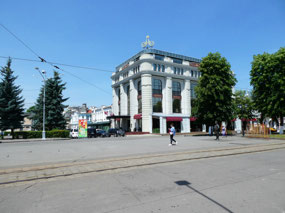
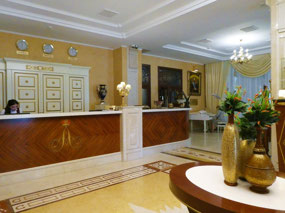
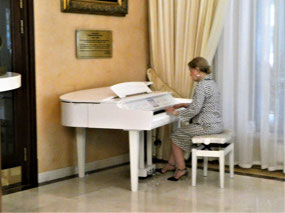
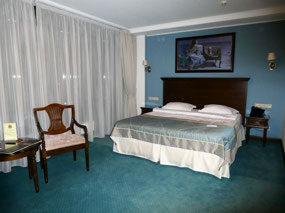
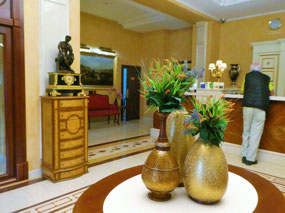
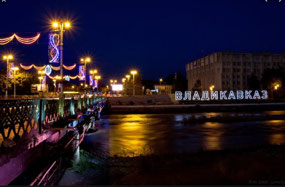
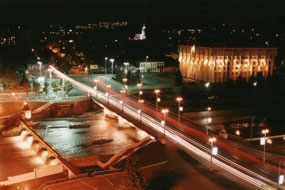


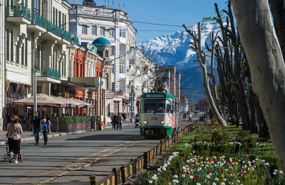
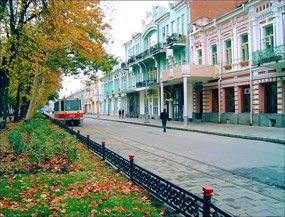
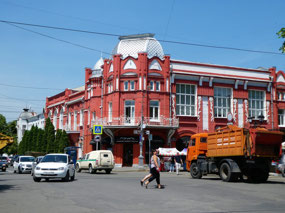
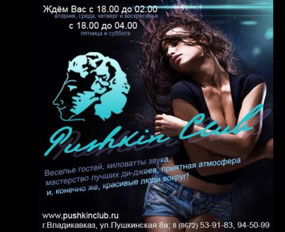
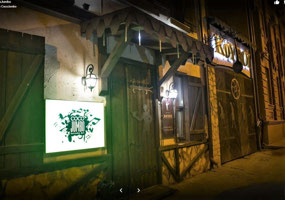
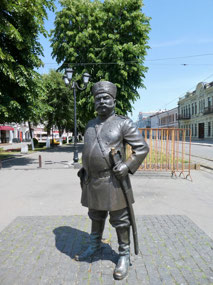
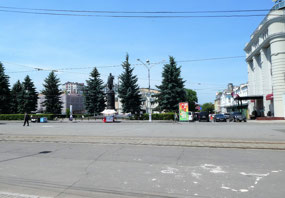

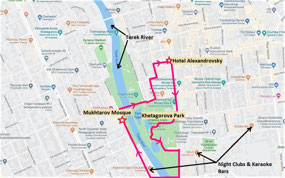
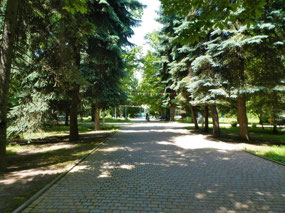
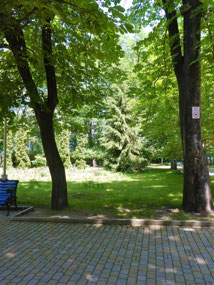

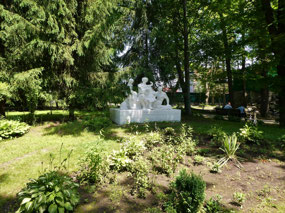
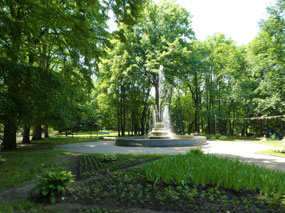

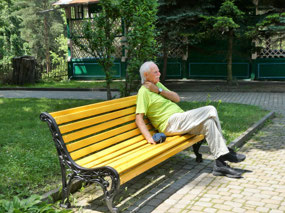
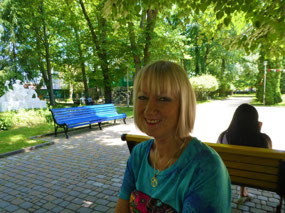
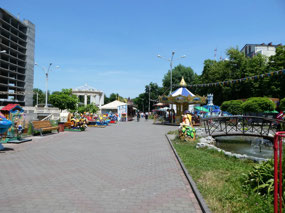
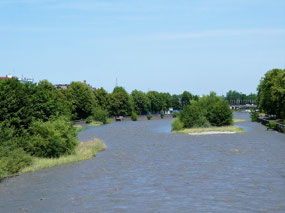

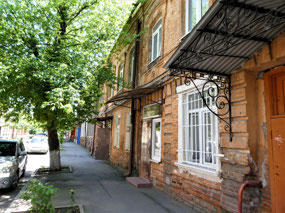

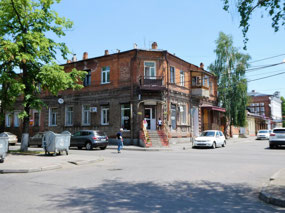
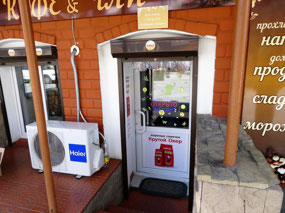
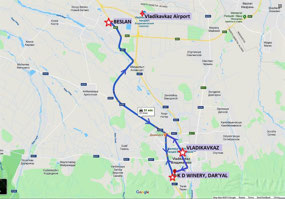
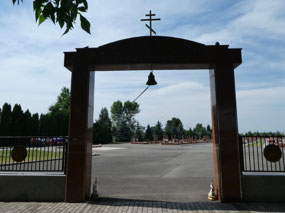
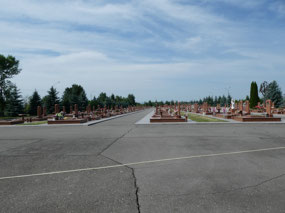
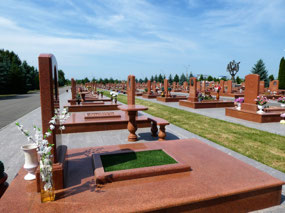
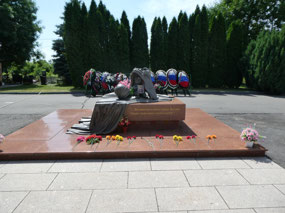
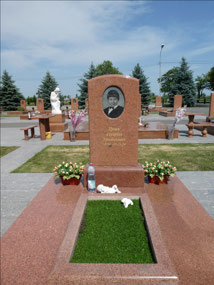

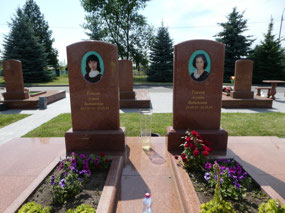
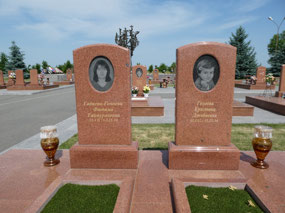
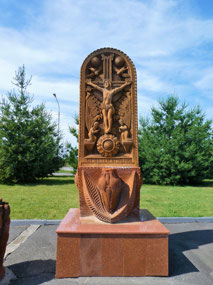
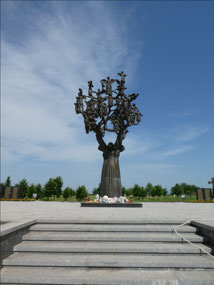
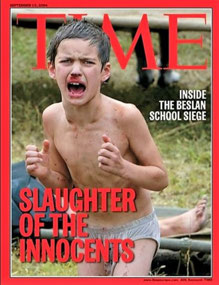
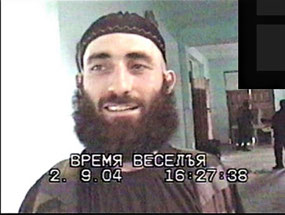
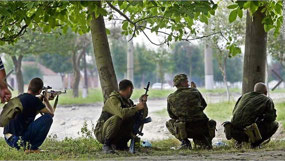
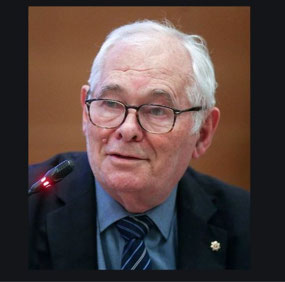
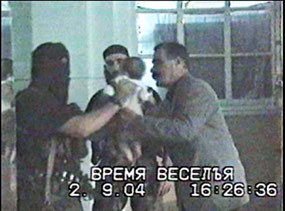
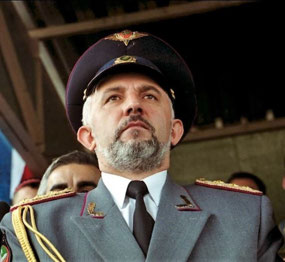

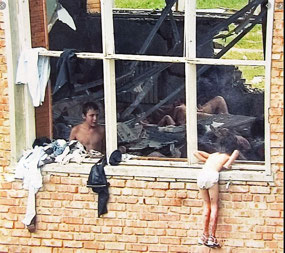
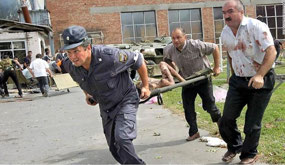
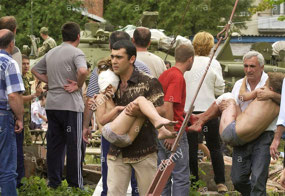

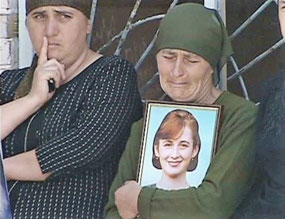
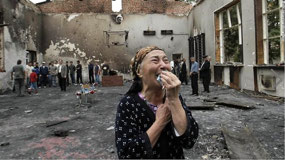

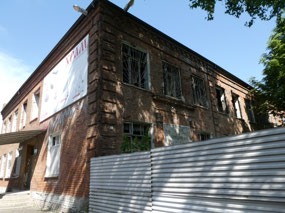
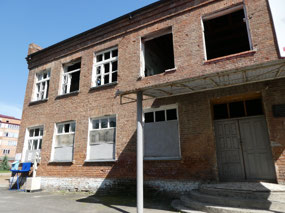
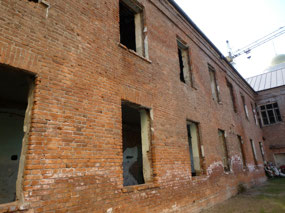
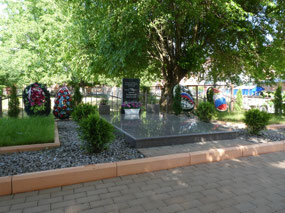
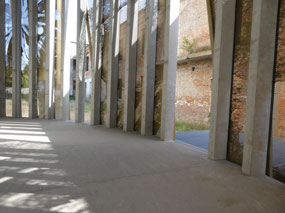
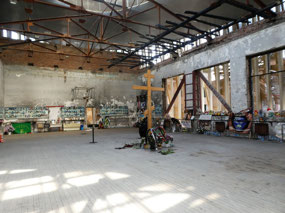
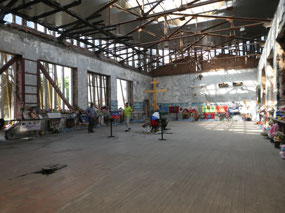
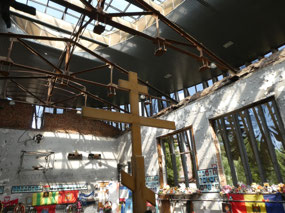
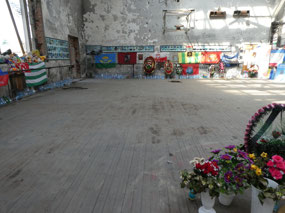
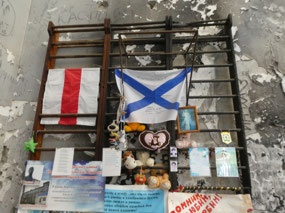
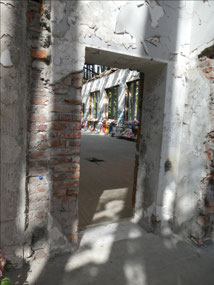
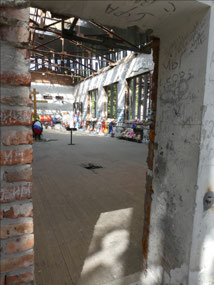
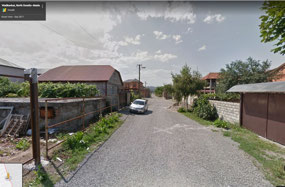

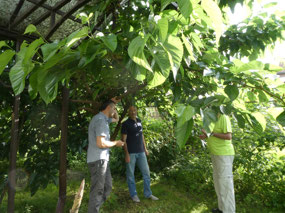
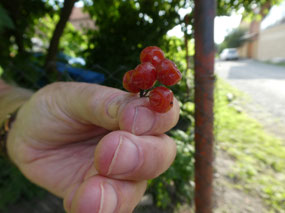
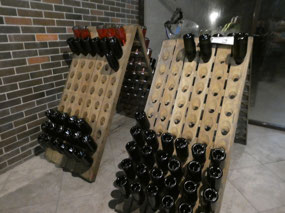
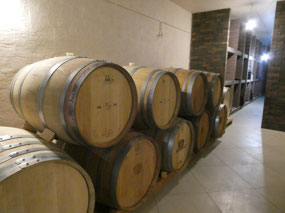
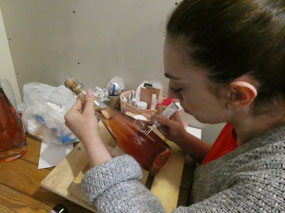
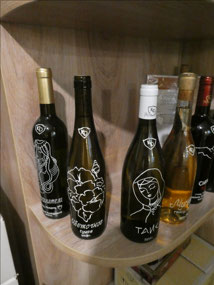
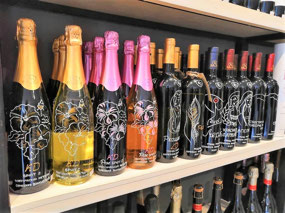
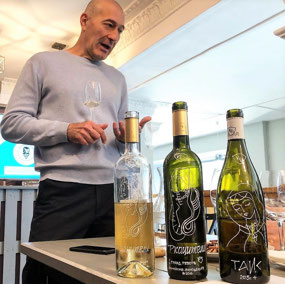
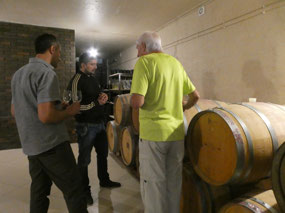



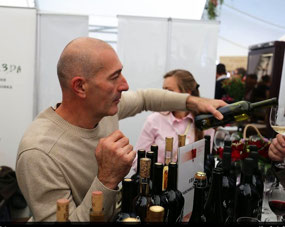
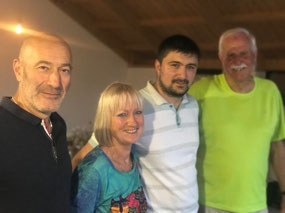
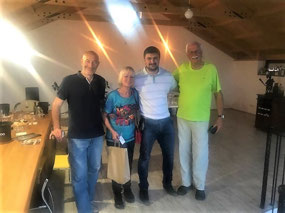
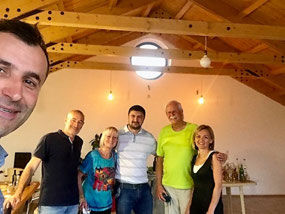

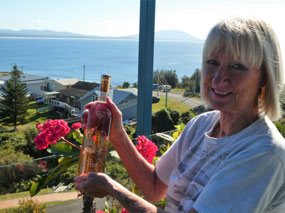



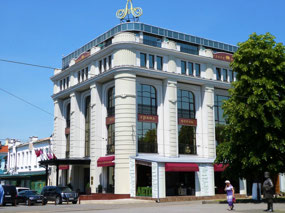
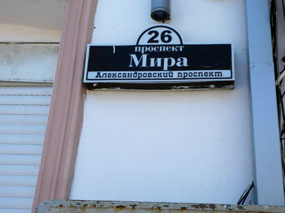
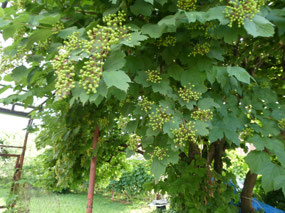
Geoff
2019-10-27
WOW!! Vladikavkaz sounds amazing, Beslan incident pretty horrible i think going to winery after prob good idea take your mind off Beslan a bit
crowdywendy
2019-10-28
I didn't think so at the time. But you are right - we did feel heaps better after sharing good company and a few wines!